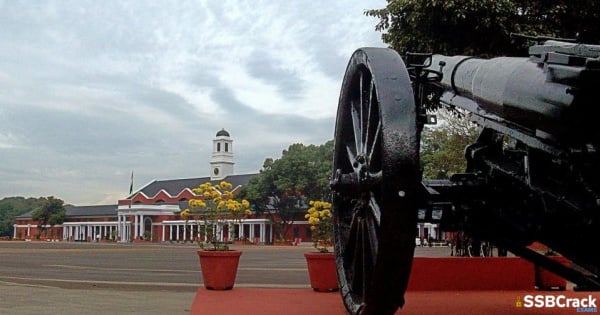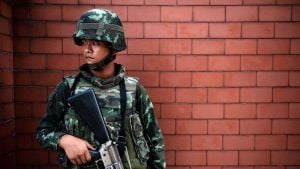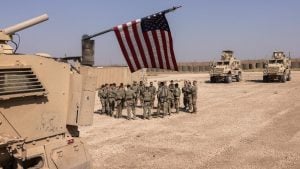The Indian Military Academy, Dehradun is one of the elite Institutions of the Country training Gentlemen Cadets for the commission in the Indian Army. The Academy is known for its glorious history and dynamic efficiency along with valiant traditions that are not only an integral part of the Nation’s proud heritage but also forms an indispensable sheet anchor of independent India’s national security. IMA encourages a Gentlemen Cadet to reflect on the greatness of India’s diversity, her secular foundation and to honour the traditions and customs of the Army. In a nutshell, IMA habitat helps him to become a rounded personality.
The Indian Military Academy is located at Prem Nagar on the outskirts of Dehradun about 250 KM from New Delhi. The forested environment and rugged mountains in the vicinity form an ideal training ground for young Gentlemen Cadets. It is believed that Guru Dronacharya of Mahabharata had his Ashram nearby and used the ground for training his disciples in the art of warfare and administration. It is an austere Institution imparting rigorous training in leadership, self-discipline and the art of war.
Through the gates of the Indian Military Academy with the Credo ‘Veerta Aur Vivek’ meaning Valour and Wisdom, pass out the future Army Officers of the Indian Army. Its professional fame places it with the finest, though much older, military training institutions of the world. The outstanding records of its alumni on battlefields around the world are praiseworthy and commendable. Let’s take a tour inside the academy premises and try to know about the major landmarks of IMA, Dehradun.
Chetwode Building
Though all the buildings in the campus are unique from the architectural point of view, the building that stands out the most is the Chetwode Building, named after Field Marshal Sir Philip Chetwode, the founder of the Academy. Built-in 1930, the Chetwode Building designed by RT Russell, an associate of Edwin Lutyens, is the Sanctum Sanctorum of the Academy. The Chetwode Building Is an eclectic combination of Colonial and British styles. It has long corridors running in North-South and East-West directions. Its gabled roof with black wooden shingles (now changed to pre – profiled coloured coated Zincolium) with a central Clock Tower which adds height to its majestic façade. It houses the administrative headquarters and is also the hub of the academic training.
IMA Museum
The Chetwode hall which is the name of the main building houses the museum. Its dimensions are 130 x 48 feet with a highly polished sunken wooden floor, panelled walls and galleries all around which house the exhibits and artefacts. Originally called the Dormer Hall, The Hall with its peculiarly groined arches reminds one of the insides of a Gothic Cathedral. Today, besides being a lecture hall it serves as a resting place of King’s Colours and State Forces Colours, as also for housing the Indian Military Academy memorabilia over the years.
IMA Library
In 1932, the IMA Library was opened in a classroom with, 800 books, most of them being donated by Brigadier & Mrs LP Collins, the first Commandant. In 1938, an additional library wing was added to the IMA Library. The foundation stone of this wing was laid by the then Commander-in-Chief General Sir Robert Canels on 25 November 1937. Today the library boasts of over 100,000 books besides reprography, digital books (i.e. digitised version of a set of 100 to 200 books packed in a book tablet), internet connection and Kiosks for easier access to information. The Library is poised to provide the most modern and technical facilities to the readers in the near future.
Khetrapal Audiotorium
The Auditorium with a seating capacity of 1400 was constructed in 1982. The auditorium is named after Second Lieutenant Arun Khetarpal winner of the Param Vir Chakra (PVC) in 1971, a proud part of the Born to Battle Course. The foyer of the auditorium contains a bust of the martyr along with a citation of his heroic deeds. The Khertarpal Auditorium is one of the largest auditoriums of North India.
Hoshiar Singh Gymnasium
Inaugurated on 09 February 2009 and named after Maj Hoshiar Singh, PVC. It is, in fact, a mini indoor stadium 50m x 40m with a seating capacity of 1400. That half has a state-of-art weight training facility, besides facilities for basketball, volleyball, handball and boxing.
Vikram Batra Mess
The central Gentlemen Cadets Mess which can accommodate 1200 trainees and be formally inaugurated on 23 June 2010 by Gen VK Singh, PVSM, AVSM, VSM, ADC, Chief Of the Army Staff. Named after Capt Vikram Batra, PVC hero of Tiger Hill battle part of Kargil war, the mess has an impressive entrance and has a striking feature in the form of the bust of Capt Vikram Batra.
War Memorial
The War Memorial of the Indian Military Academy was inaugurated by Field Marshal Sam Manekshaw on 17 November 1999. The architectural style of the memorial is in consonance with the original structures of the Academy with the façades replicating the Chetwode Tower. Its pillars and arches of monolithic Dholpur Stone complement the structure. The Sanctum Santorum is a seven and a half feet bronze statue of a Gentleman Cadet saluting with a sword. To the rear of the statue is located an amphitheatre and, to its flanks, are designed arches on which are etched names of the valiant alumni who have made the supreme sacrifice.
Newly Constructed GCs Accommodation
Kingslay and Collins Blocks
The living quarters for Gentlemen cadets are a group of beautiful buildings with enclosed lawns. They combine the essence of barracks and the permanence and privacy of a hostel building. Today they continue to house the Gentlemen Cadets, however, with manifold growth in the Academy, they accommodate only one of the five Battalions, with the other four located in the South and Town Campus respectively.
Nizam Pavillion
Nizam Pavilion is named after Asaf-Jah-Nizam-ul-Mulk, the former ruler of the erstwhile princely state of Hyderabad. The Nizam had donated Rs 5000/- towards its remodelling. The Pavilion was intended to provide dressing, changing and refreshment place for the sports teams visiting Academy from the universities, schools and other institutions in India. The Pavilion is flanked on its right side by another building which serves as an Officers’ Institute and on its left is an open structure with Corinthian pillars which is multi-purpose hall as well as a dance floor.
You can prepare for defence entrance exams such as CDS by taking Written Online courses as they will not only give you access to full-length quality lectures but will also provide the facility to take standardized mock tests for better study and strategic growth in the exam. You can take multiple quizzes after each lesson to ensure the full understanding of the subject along with creating your customized lesson plans. You can check out the course content along with other important specifics at SSBCrack exams.
You can also access them through the SSBCrack Exams app available in the google play store.
Jai Hind



















